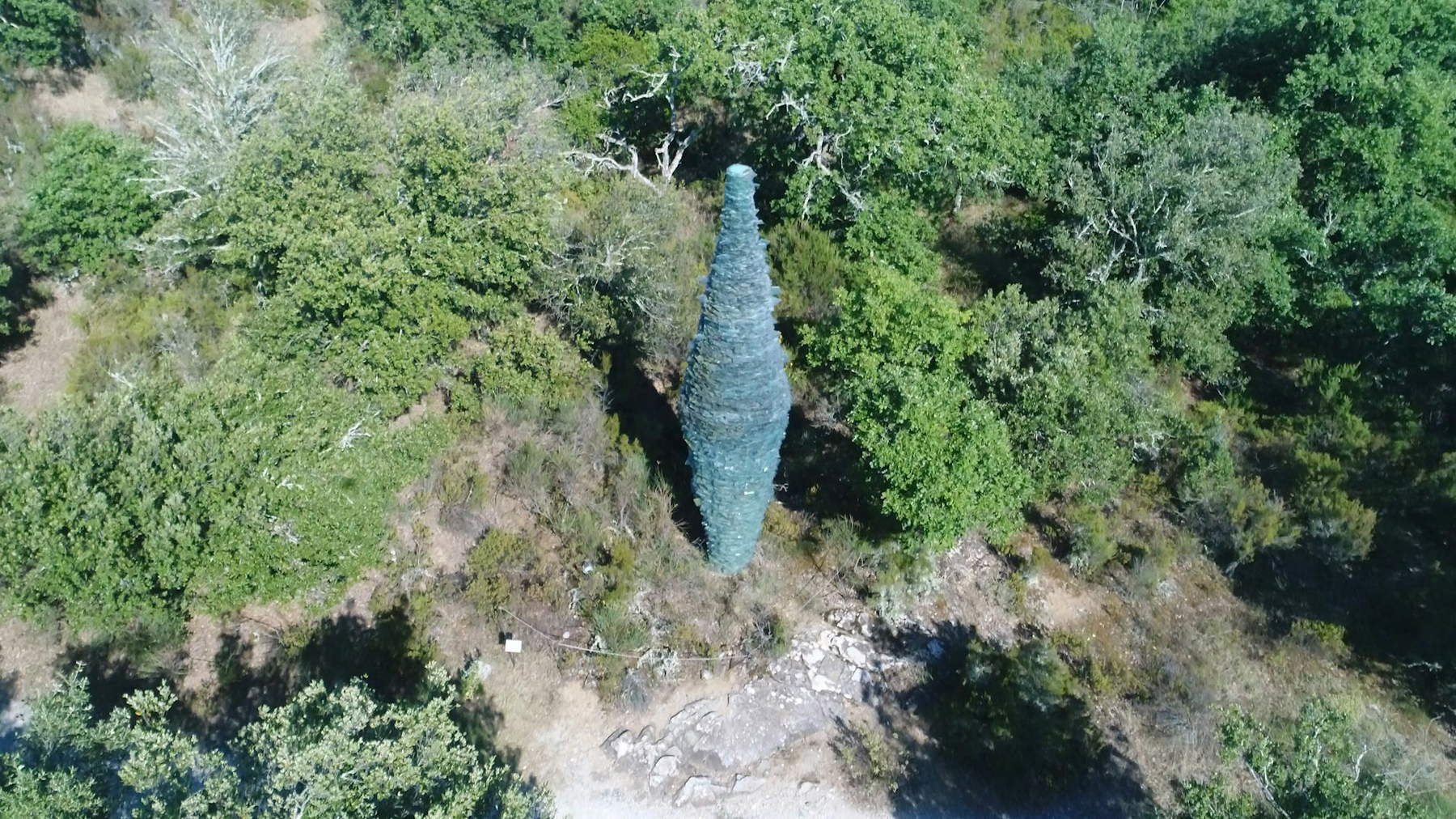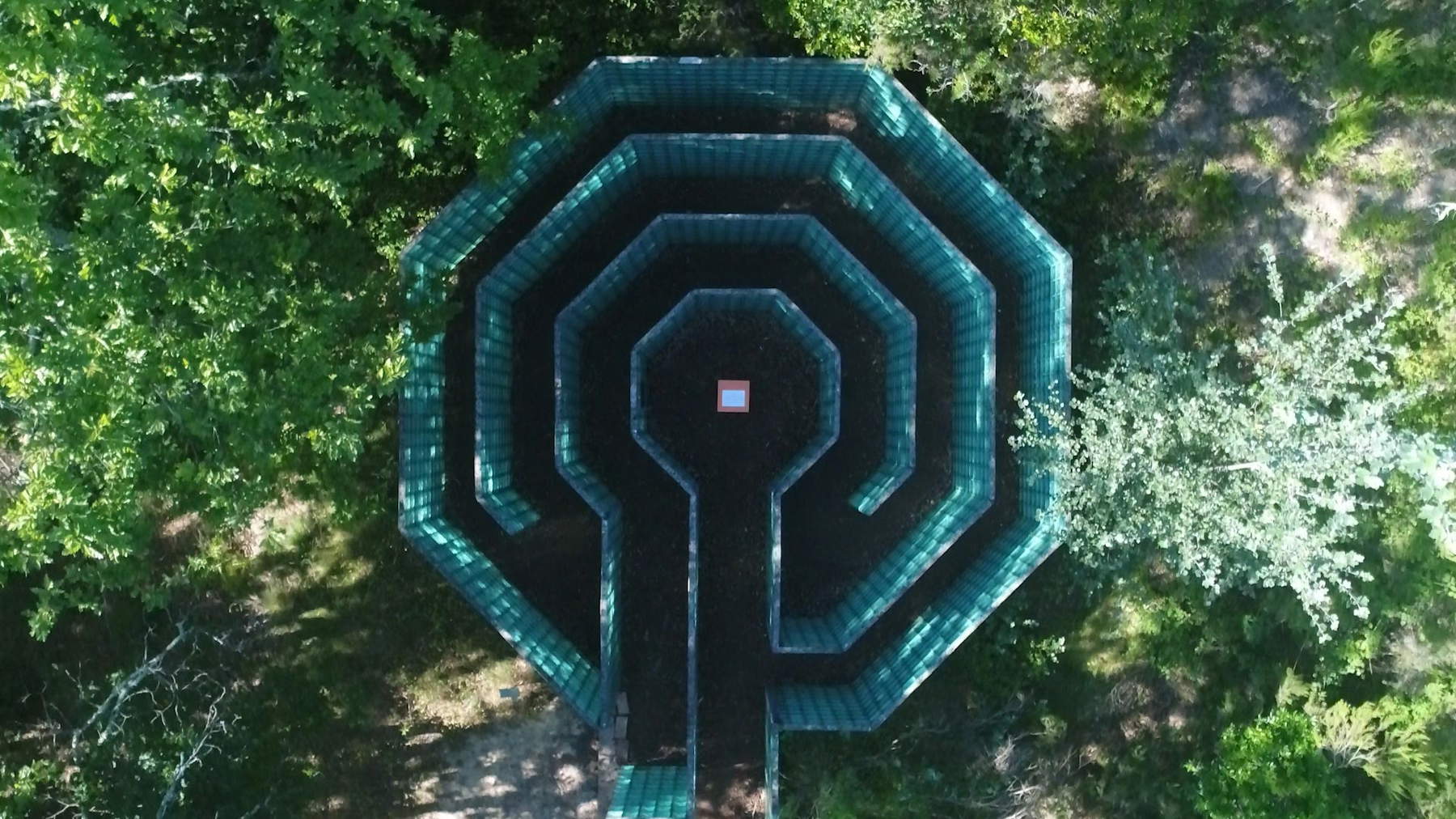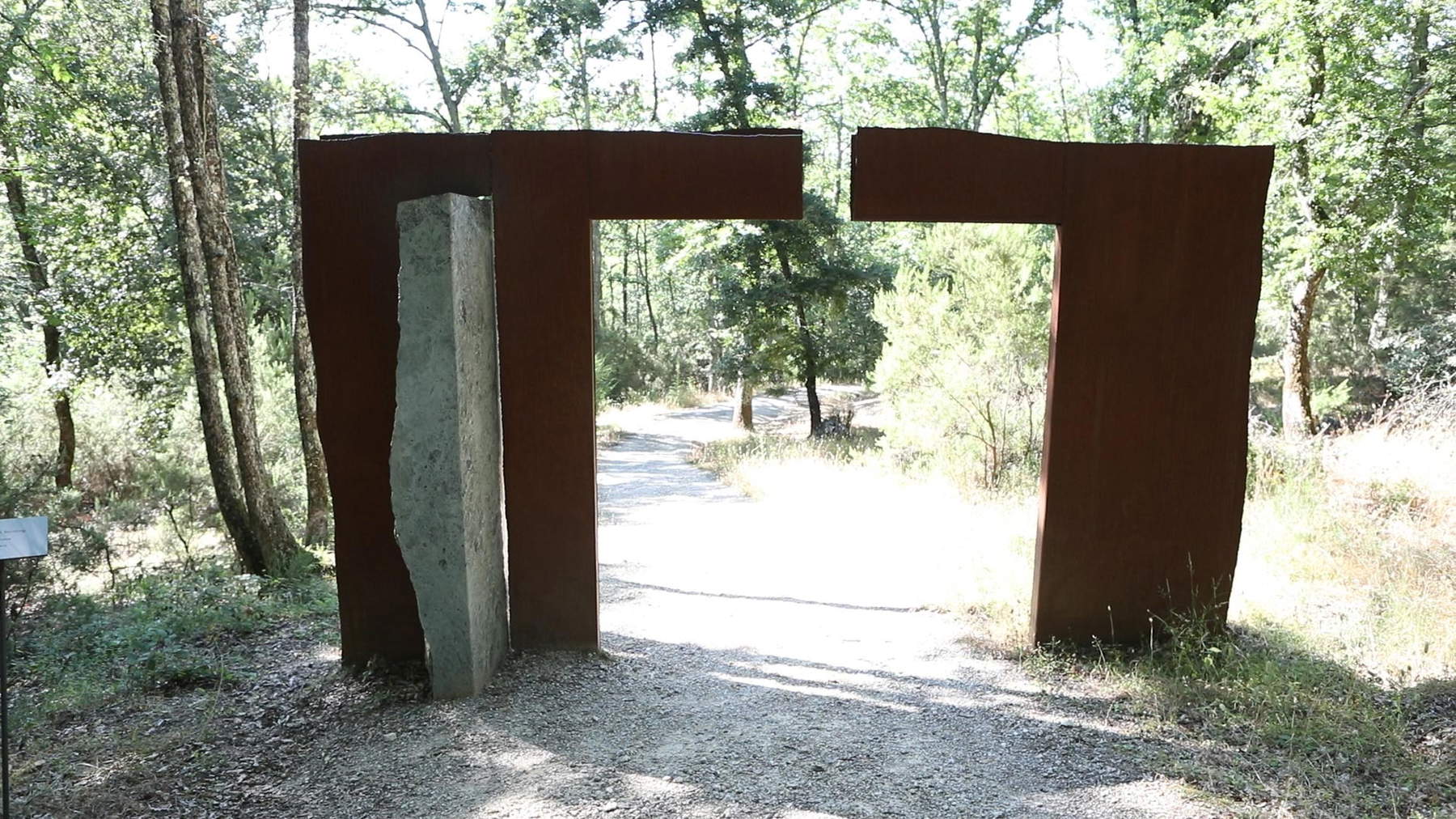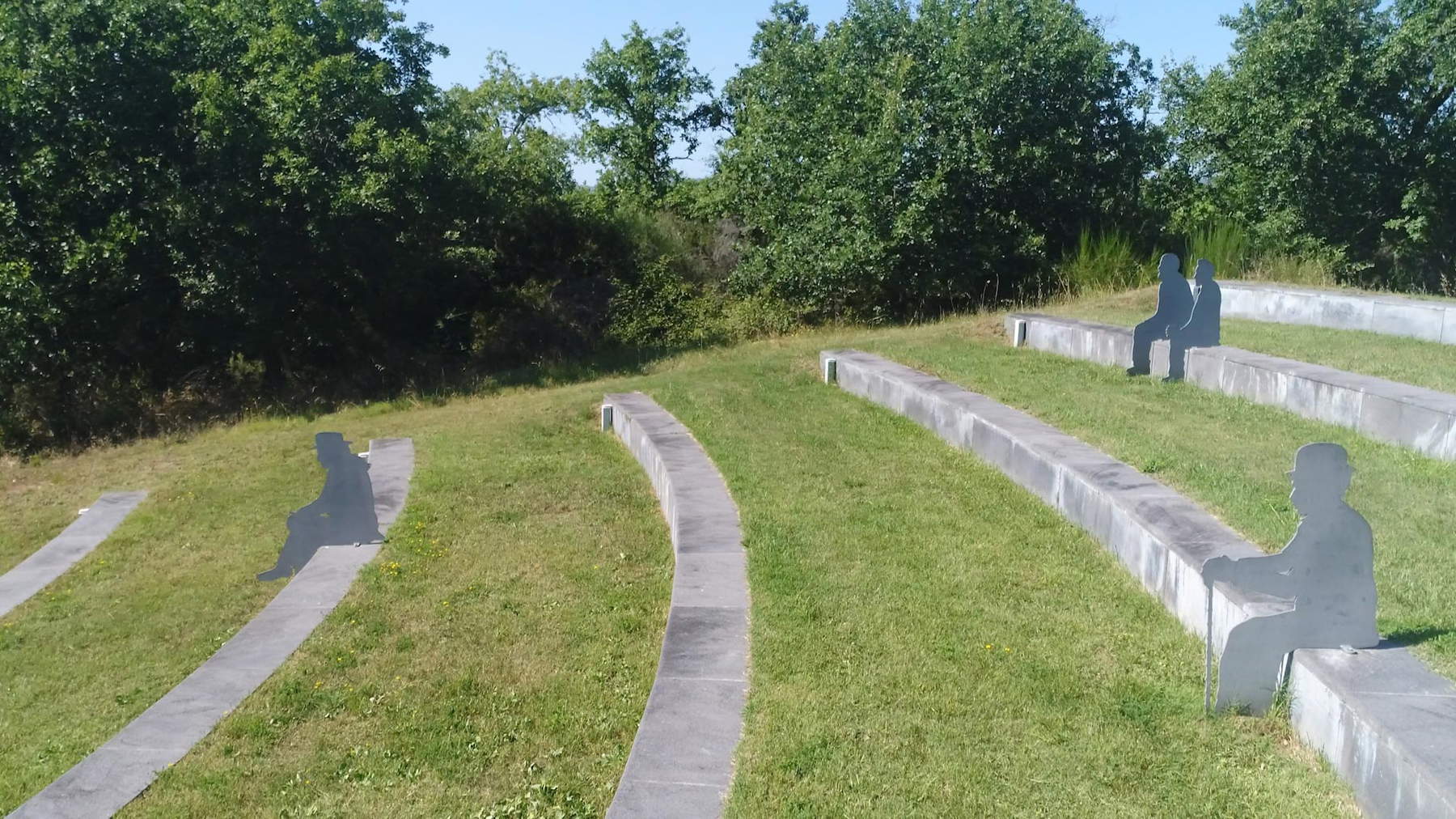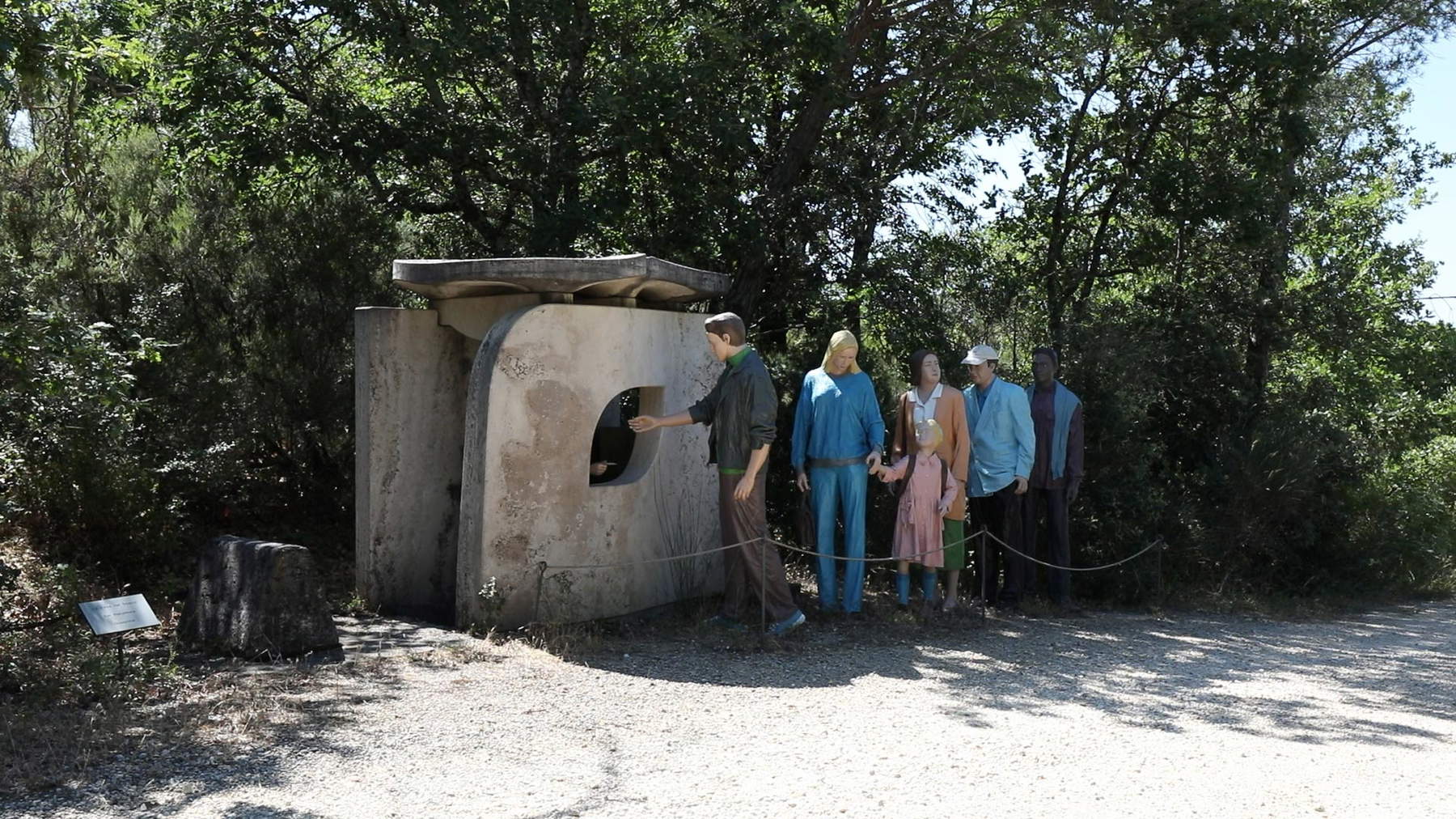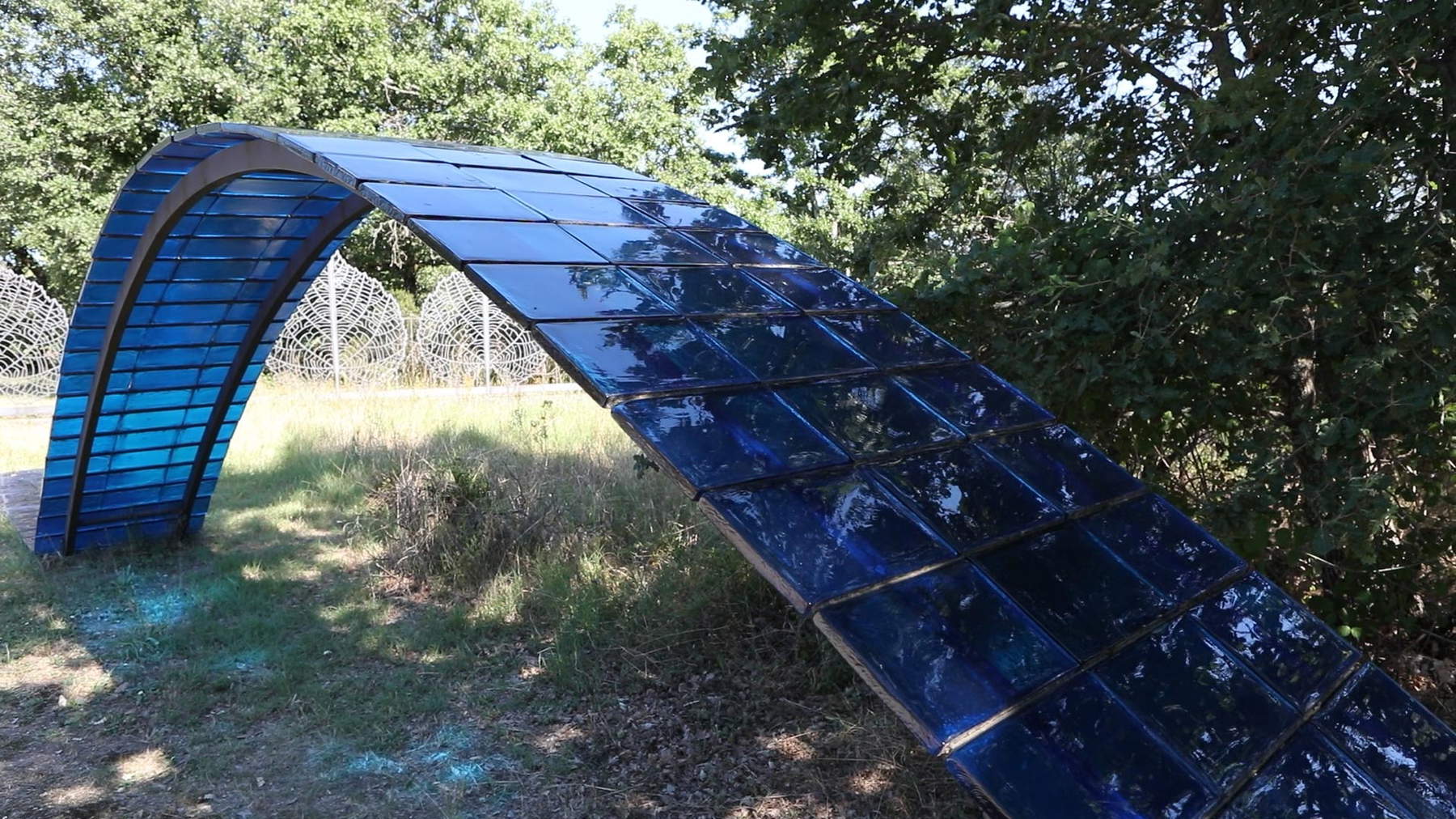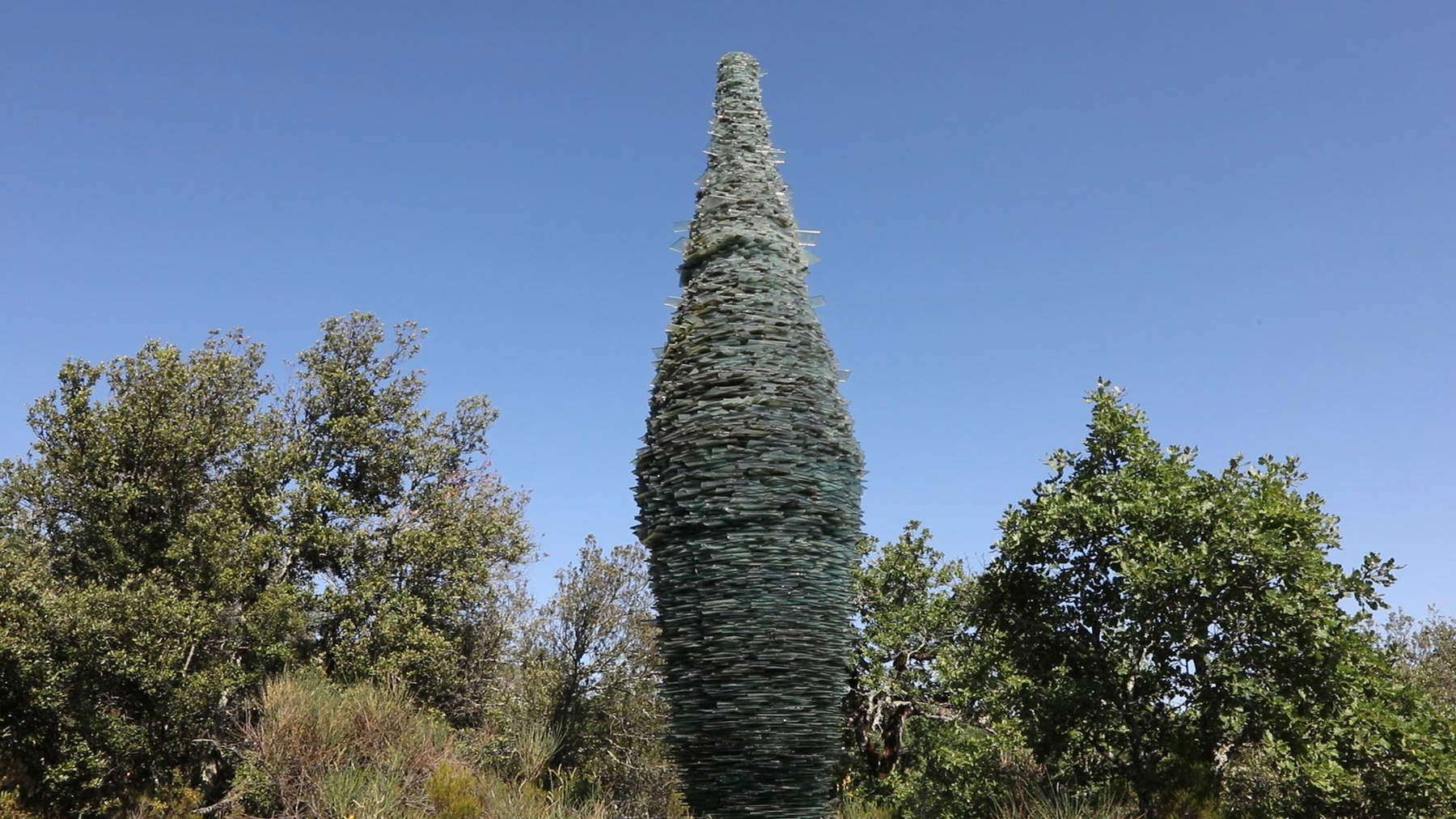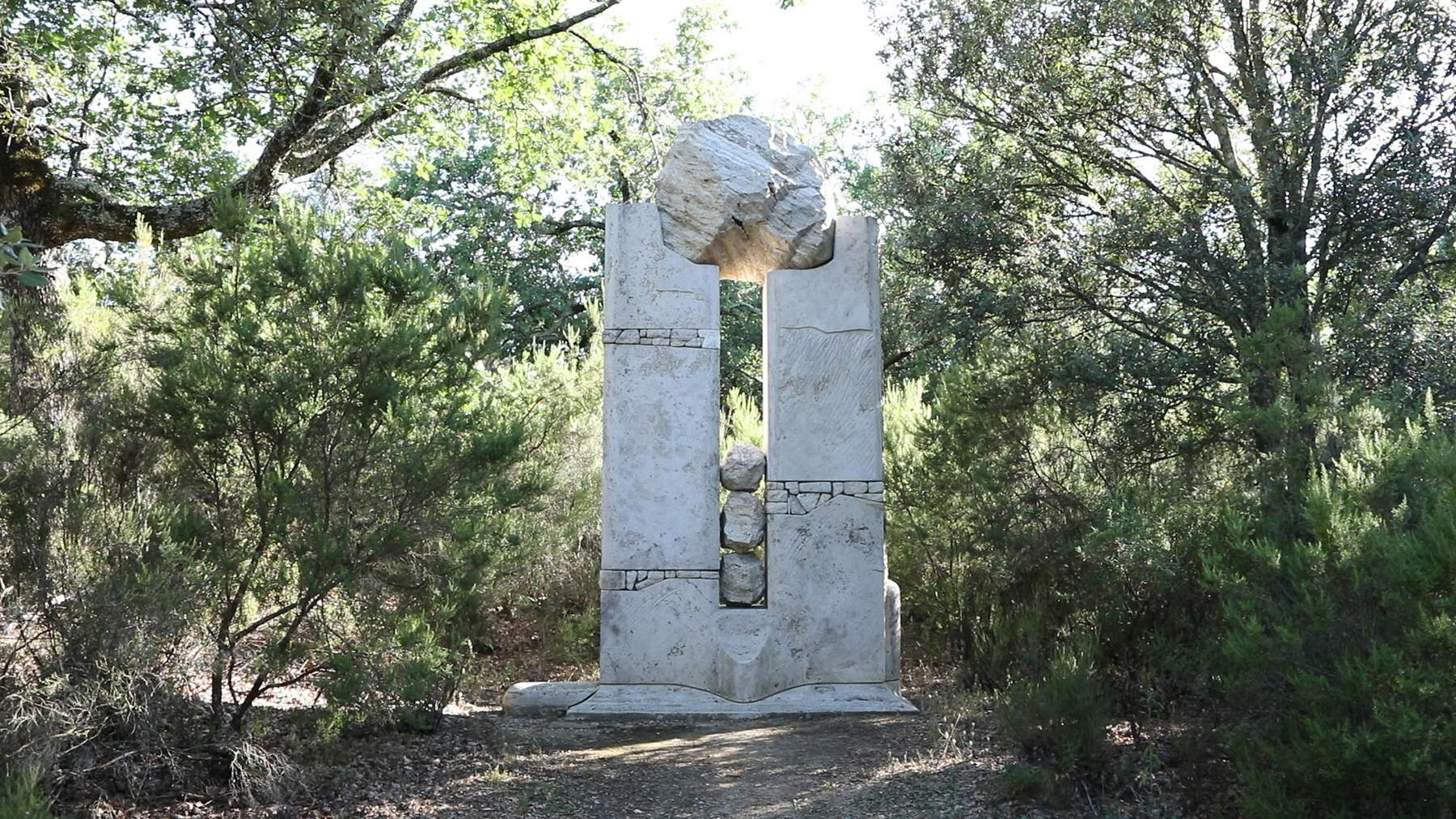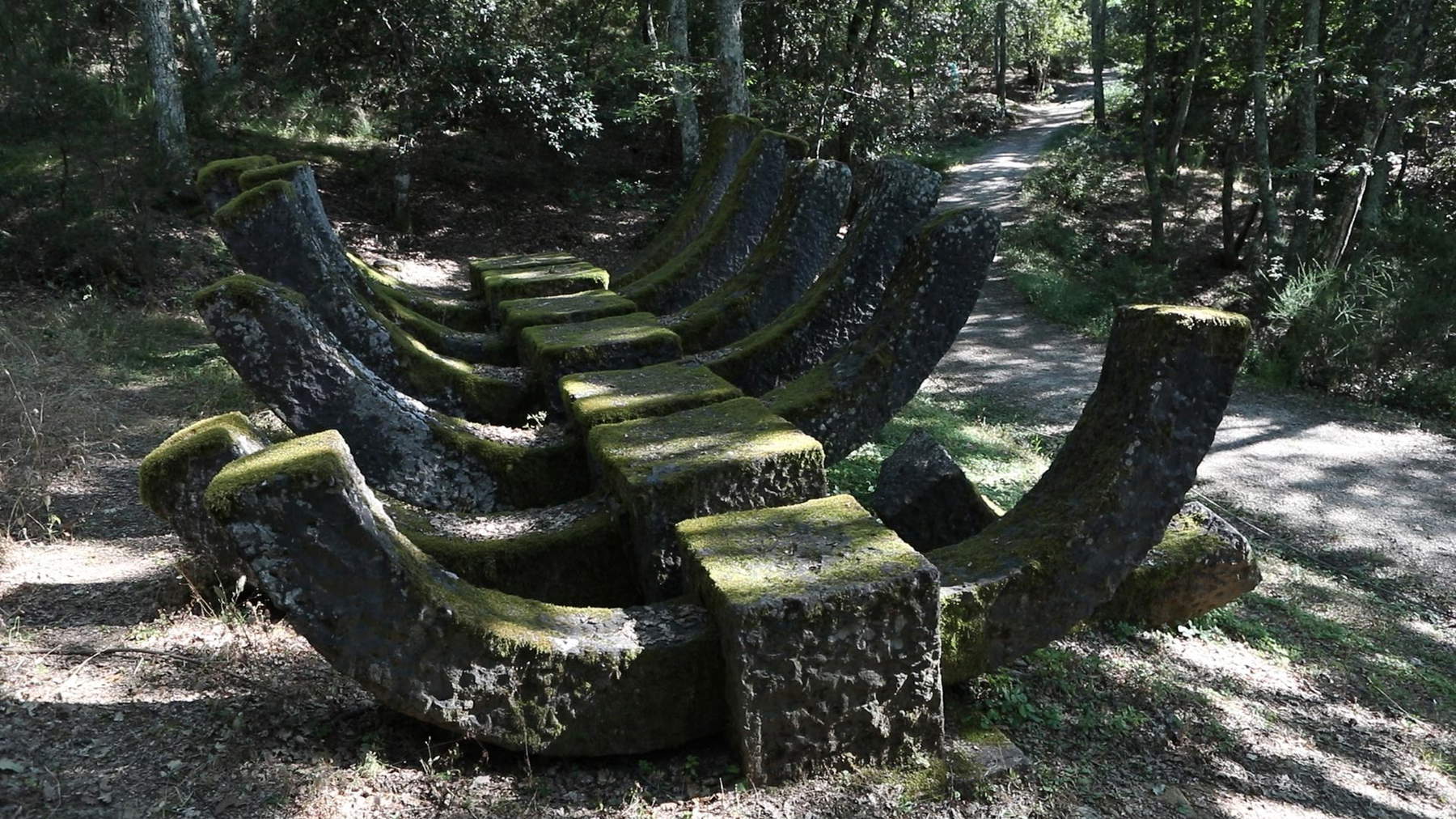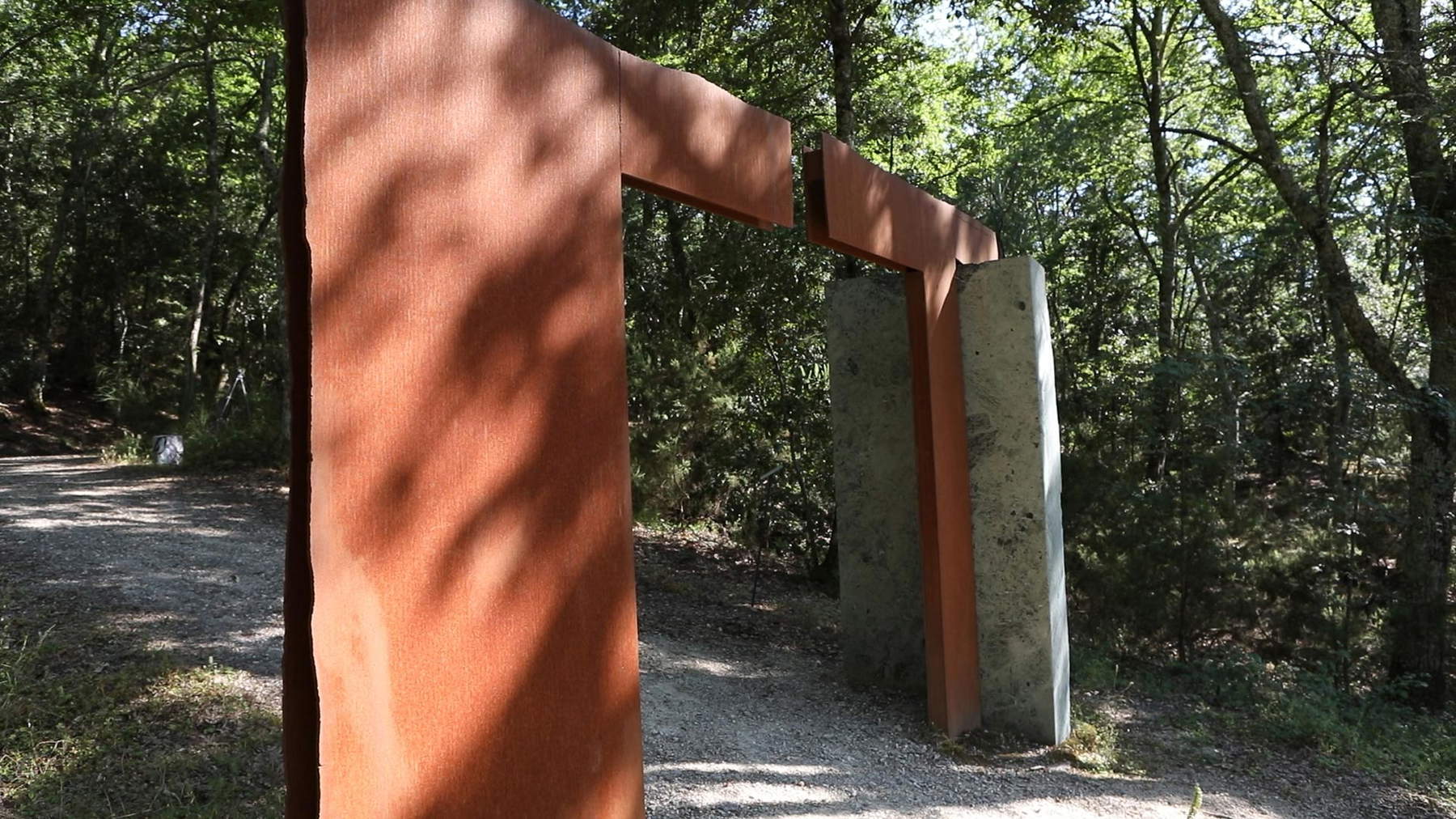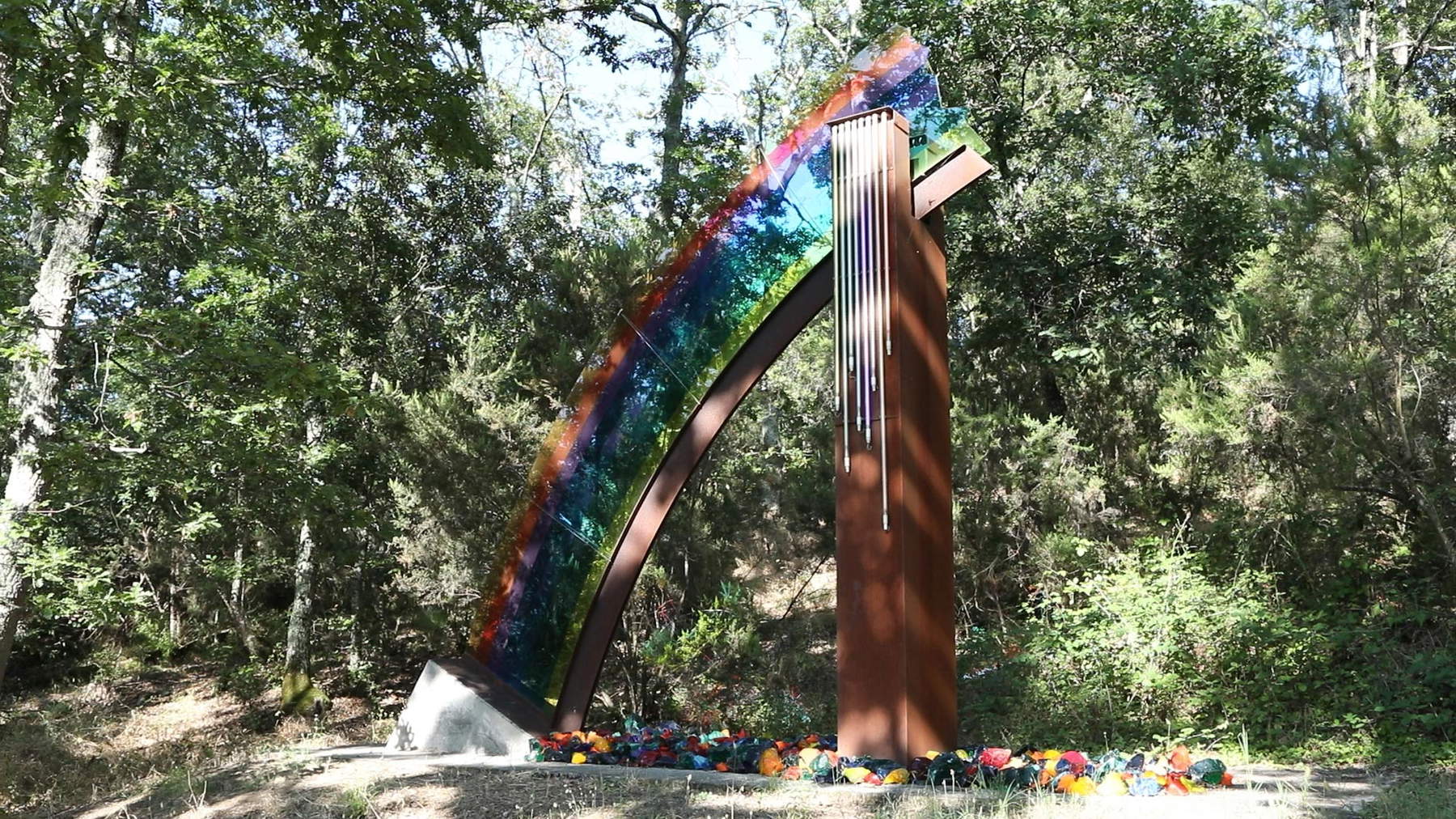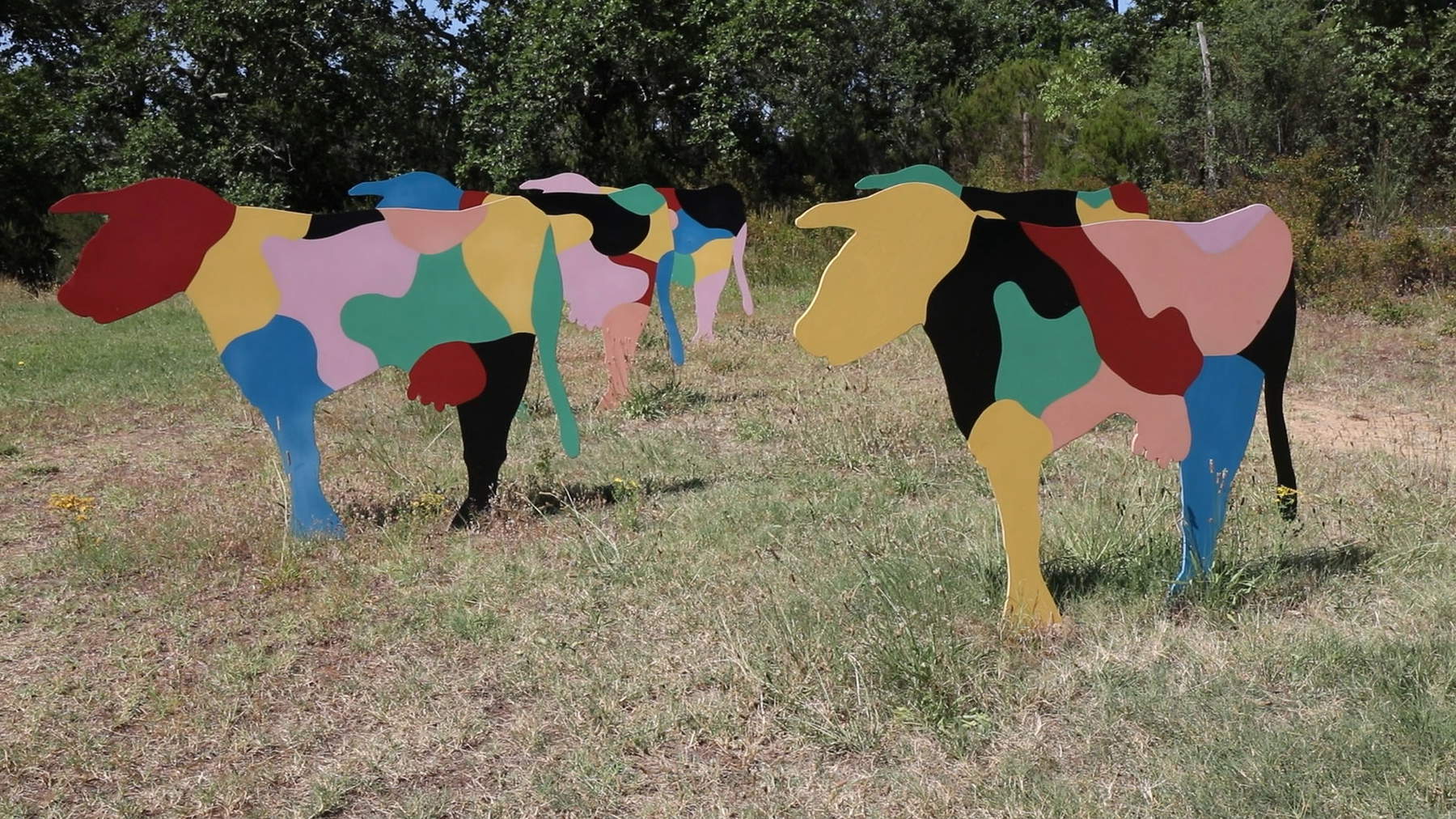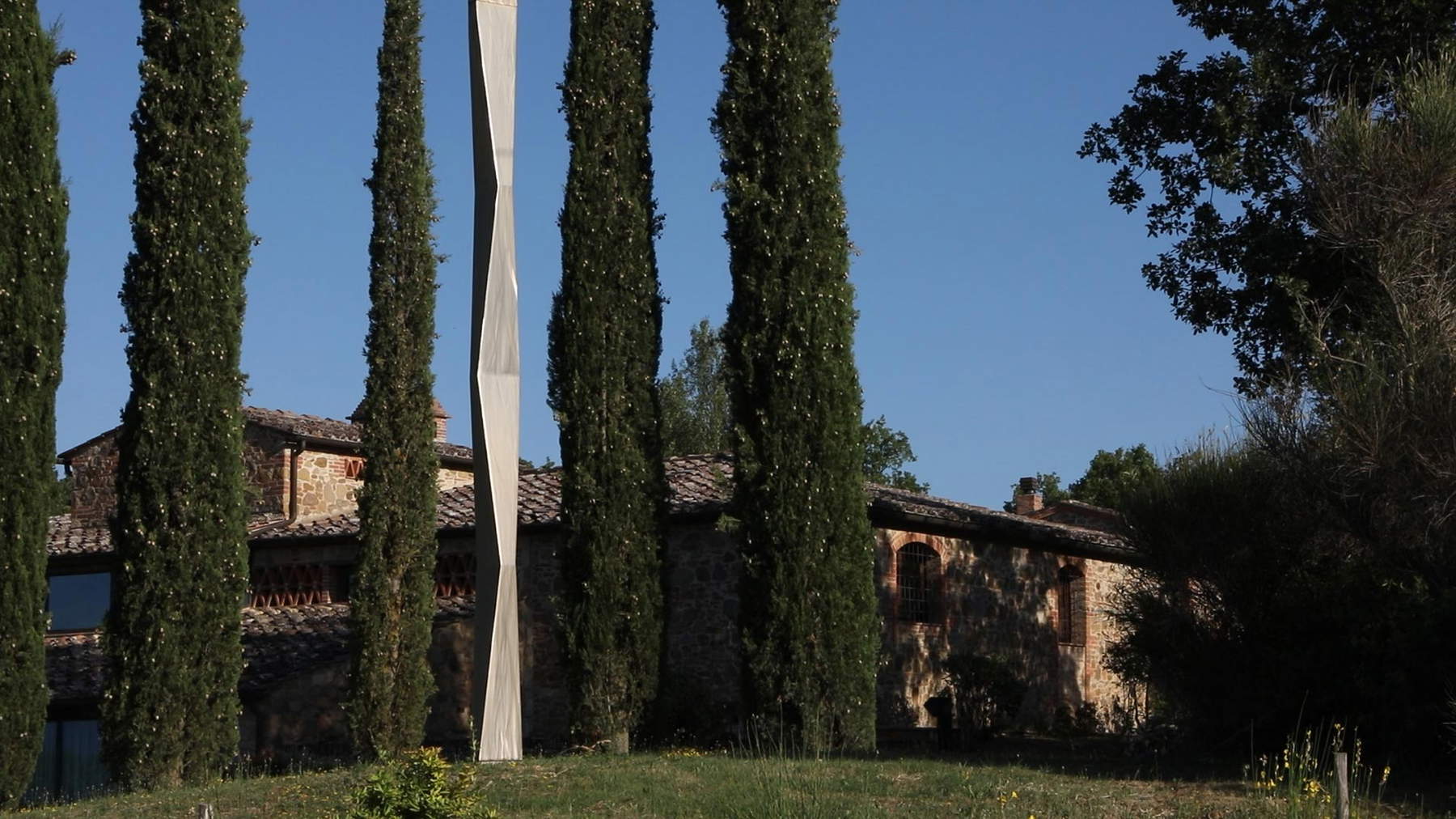by Federico Giannini, Ilaria Baratta , published on 15/07/2020
Categories: Works and artists
/ Disclaimer
Since 2004, among the Chianti hills, there has been a forest where art becomes an integral part of the landscape, with which it dialogues in harmony: it is the Chianti Sculpture Park.
A forest where wild boars once ran, on the slope of a hill, not far from Siena (the city is about twenty minutes away by car), but already in full nature: the nearest village, Pievasciata, is a handful of houses a few hairpin bends away. Even, if one arrives from the north, the only way to get here is a so-called “white road,” that is, a dirt road that, from the village of Vagliagli, goes for four kilometers of curves among the trees: so, those who prefer an easier path, the one that goes up from Ponte a Bozzone, have to go a little further. Holm oaks, oaks, olive and beech trees make up the surroundings, not to mention the ever-present cypresses, a presence that accompanies the traveler throughout this area of Tuscany. This is the context in which the Chianti Sculpture Park, one of the most visited and celebrated contemporary art parks in the region, is located: the municipal territory is that of Castelnuovo Berardenga, but the town is about ten kilometers away. A path of statues by artists from all continents, set in seven hectares of woodland, where in the 1990s there was a wild boar farm: the land was then taken over by a couple from Trieste, Piero and Rosalba Giadrossi, gallery owners (Piero is also an artist, as well as curator of the park), who decided to convert it into a large art garden.
The work took five years, and in 2004 the park could finally open to the public. Piero and Rosalba Giadrossi wanted a place in which the integration of art and nature was as accomplished as possible: for this reason, each work was born site specific, that is, specifically made for the context in which it was placed within the forest. Each of the twenty-six artists involved in the project personally visited the forest and worked keeping in mind all the elements that would interact with the sculpture: the light, the location, the scents of the forest, its sounds, and its colors. In addition, the couple took care to give adequate representation to all materials: there are works in iron, marble, stone, wood, resin, and glass.
Harmony and union with nature are the basic principles that guided the creation of the Chianti Sculpture Park. “While there are differences in subject matter, materials, and styles in the Park,” wrote art historian Brenda Moore McCann in the introduction to the catalog, “the majority of the sculptures exhibit a remarkable sensitivity to their natural surroundings with which they are well integrated. In this eclectic range of works and themes, each retains its autonomy but the integration makes the Park an organic and highly creative whole.” Thus avoiding the problem that characterizes several other parks, that of the jumble of works and poor communication between the works of the various artists taking part. Here, on the contrary, there are no works that dominate over the others: almost all of them enjoy their own space without others interfering. Or, when they enter the visual field together, they do so to weave a deep dialogue. This is also why every year the site attracts thousands of visitors from all over the world, who come so far to realize how, in Tuscany, art represents a means of emphasizing the fruitful and respectful relationship that has linked man to the landscape for centuries. So there are many publications that cite the Chianti Sculpture Park as one of the most brilliant examples of environmental art, and everywhere there is mention of National Geographic, which, in 2014, included it among the ten most beautiful parks in the world. Medals of which the park is proud.

|
| Chianti Sculpture Park. Ph. Credit Alessandro Pasquali - Danae Project |

|
| Chianti Sculpture Park. Ph. Credit Alessandro Pasquali - Danae Project. |

|
| Chianti Sculpture Park. Ph. Credit Alessandro Pasquali - Danae Project. |

|
| Chianti Sculpture Park. Ph. Credit Alessandro Pasquali - Danae Project. |

|
| Chianti Sculpture Park. Ph. Credit Alessandro Pasquali - Danae Project. |

|
| Chianti Sculpture Park. Ph. Credit Alessandro Pasquali - Danae Project |
The tour begins with The House in the Woods, a travertine work by Japanese artist Kei Nakamura (Takorozowa, 1976): it was originally the park’s ticket office, reminiscent of classical architecture, here reduced to its most basic forms, namely two vertical elements supporting a vertical one. It is a kind of statement of intent: the colors, shapes (there is even a leaf-shaped window) and material recall the forest, while the structure refers unmistakably to human action. Nakamura himself wanted a work that could immerse itself in the landscape, “but at the same time be a sculpture in interesting contrast to nature,” he said. From the solidity of architecture to the elusive nature of water, from classical antiquity to the canals of Venice: the journey continues with The Blue Bridge by Danish artist Ursula Reuter Christiansen (Trier, 1943), the only work not made specifically for the park since it was executed for the 2001 Venice Biennale, in open reference to the bridges and canals of Venice (and its manufacturing activities: the glass armature in fact holds 213 glass tiles), fused into a single element. Here, in Chianti, it has taken on another significance: “it represents,” writes Brenda Moore McCann, “a metaphor connecting Venice to a forest in the heart of the Chianti hills or more simply one place to another,” but also “people and cultures,” as well as being an allegory “of every visitor’s journey.”
A little further on, catching the visitor’s eye is Energy by Costas Varotsos (Athens, 1955), a monumental sculpture eight meters high, made entirely of glass with a long iron tube supporting the fragile material, and whose shape immediately recalls that of the cypress trees typical of the region and blends perfectly with the trees not far away, moreover changing colors depending on the light conditions: its position, in the middle of a small clearing, allows it to indulge in the sun’s rays at any time of day. “This work,” says Moore McCann, “places itself on the same level as the viewer and rather than commemorating a past event or person, it provides a visual experience that also engages physically.” A beam of energy, in short, rising from the earth to remind us of the power of nature’s forces. A power that also seems likely to be released at any moment by Mauro Berrettini ’s (Buonconvento, 1943) La pietra sospesa (Suspended Stone ), made of travertine quarried in Rapolano, not far from here. Man and nature again lap each other, in a smooth, austere portal holding a rough stone: the boulder looms over those who cross the portal, as if to dissuade them from physically crossing the threshold (as if, moreover, the other three vertically inserted stones were not enough), and to invite them to cross it, rather mentally, spiritually. A kind of invitation to respect nature, establishing with her a relationship of happy exchange.
Past a few installations(Balance by Christoph Spath, Harmonic divergence by Jaya Schuerch, Faith and Illusion by Dolorosa Sinaga, Limes by Johannes Pfeiffer and Falling leaf by Yasmina Heidar) one enters the thicket of the forest and reaches the park’s most imposing sculpture, The Keel by Turkish artist Kemal Tufan (Istanbul, 1962), a work in volcanic lava depicting the skeleton of a ship. An enormous vanitas that reminds man that he is at the mercy of nature, since it is the force of the sea that has reduced the majestic ship into a bony inert structure lying under the trees. But it is also a symbol of regeneration: the remains of the ship become a work of art and are ready to live a new life under a new form. In front of Tufan’s work, here appears theunfinished Building by Dutchman Cor Litjens (Nijmegen, 1956), framing The Keel with its structure that again resembles a portal: this time, however, the sculpture is placed in the middle of the path, forcing the visitor to pass it to make him participate in the work. A participation that spurs him to imagine what that building would look like, if it were completed: a bit like what happened to so many great works in art history, starting with the Duomo Nuovo in Siena, the monumental cathedral that never saw the end of its work and that inspired Litjens’ sculpture. The colors of nature do the rest, becoming symbols of time acting on what man has not finished.

|
| Kei Nakamura, The House in the Woods. Ph. Credit Alessandro Pasquali - Danae Project |

|
| Ursula Reuter Christiansen, The Blue Bridge. Ph. Credit Alessandro Pasquali - Danae Project |

|
| Costas Varotsos, Energy. Ph. Credit Alessandro Pasquali - Danae Project |

|
| Mauro Berrettini, The suspended stone. Ph. Credit Alessandro Pasquali - Danae Project |

|
| Kemal Tufan, The Keel. Ph. Credit Alessandro Pasquali - Danae Project |

|
| Cor Litjens, Unfinished building. Ph. Credit Alessandro Pasquali - Danae Project |
A few steps further on, one will find the park’s first interactive sculpture: it is Dialogue by Australian Anita Glesta (New York, 1958), consisting of two distinct parts that sit on two facing cliffs, separated by a creek. These are two seats, one in travertine and the other in marble (specifically in white and green marble, the typical two-tone of ancient Sienese architecture), where one can sit to admire the forest, in one of the most scenic spots in the park. A dialogue between the two areas of the forest, a dialogue between the visitor and the park. And a dialogue under the banner of interaction that continues shortly after, when one comes across the Labyrinth by British artist Jeff Saward, a specialist in labyrinths, on which he has been working continuously since 1976. The labyrinth has characterized Tuscan art for centuries: from the Etruscans (labyrinths have been found engraved on the pottery produced by the people who inhabited Tuscany in ancient times) through medieval art (the most famous is the one on the façade of the Cathedral of San Martino in Lucca) to contemporary art, with the labyrinth created in 1980 by Robert Serra for the park of Villa Celle in Pistoia. Saward’s Labyrinth is the latest addition to the region and is meant to be a journey of self-discovery: having finished the journey inside the labyrinth, which is octagonal in shape and made of glass tiles, the visitor will find a seat and a mirror. The confrontation here will be with the self.
Among the most surprising presences in the forest is Rainbow Crash by Federica Marangoni (Padua, 1940): an artist and designer, she is an internationally known glass specialist (for her also a participation in the Venice Biennale), and for the Chianti Park she has designed a rainbow that is interrupted in the middle, falling and shattering to the ground (the glass fragments of the broken rainbow are all scattered at the base of the statue). With one peculiarity: instead of the seven true colors of the rainbow, the artist used eight, further symbolizing the artificial nature of his intervention. The fragility suggested by Rainbow Crash is meant to bring us face to face with the extreme delicacy of our bond with nature: recent history has shown us how this balance has often been challenged or threatened by advances in technology and consumerism, and Federica Marangoni’s work is meant to remind us of this. From nature we move to the city, with a very special sound installation, Off the beaten track by Englishman William Furlong (Woking, 1944), consisting of sixteen steel cubes placed on two sides of a path that deviates slightly from the main one. As you walk between the cubes, after a few seconds you will be able to hear the sounds of the city: the bells of Siena Cathedral, the hubbub of tourists, a band passing in the street, the siren of an ambulance. It’s an alienating effect: amidst the absolute calm of a forest far from any din, you are plunged into the hustle and bustle of the city.
One again gains the main path and completes the loop: however, before going, it is impossible not to first take a look at the Milk Factory by Vincent Leow (Singapore, 1961), the colorful molded iron cows meant to prompt visitors to reflect on urbanization taking over from nature and the fact that even nature must submit to the logic of mass production, and it is equally impossible not to stop for a moment in the open-air theater, built in 2009 to a design by Luciano Cortigiani and Piero Giadrossi. It is used for the musical season held at the park every summer, from June to August, but the theater itself is a work of art: in fact, on the bleachers are figures of illustrious spectators (Charlie Chaplin, Laurel and Hardy, Federico Fellini, Alfred Hitchcock, but also a mother with her child), and the contrast of the materials with which the stage wings, namely white Carrara marble and black granite from Zimbabwe, were made, propose an encounter between two distant places, between two different cultures.

|
| Jeff Saward, The Labyrinth. Ph. Credit Alessandro Pasquali - Danae Project |

|
| Federica Marangoni, Rainbow Crash. Ph. Credit Alessandro Pasquali - Danae Project |

|
| William Furlong, Off the beaten track. Ph. Credit Alessandro Pasquali - Danae Project |

|
| Vincent Leow, Milk Factory. Ph. Credit Alessandro Pasquali - Danae Project |

|
| The theater of Piero Giadrossi and Luciano Cortigiani. Ph. Credit Alessandro Pasquali - Danae Project |

|
| Adriano Visintin, Xaris. Ph. Credit Alessandro Pasquali - Danae Project |

|
| Benbow Bullock, Homage to Brancusi. Ph. Credit Alessandro Pasquali - Danae Project |
The visit to the park does not actually end in the woods, but on the other side of the road leading there: there is in fact the La Fornace gallery, in whose garden other works can be admired. A minimalist, scientific elegance is what inspires Xaris by Adriano Visintin (Sagrado, 1955), a sculpture that, writes Brenda Moore McCann, “represents on a large scale what is the leading motif in the Friulian sculptor’s way of making art,” namely “the plastic bending and curving of the figure that refers to an abstract dancing female figure.” Almost a dancer bending to touch her toes, and taking the form of a parabola (figures inspired by geometric forms are frequent in Visintin’s art, and this one is no exception, right from the title: the X is the letter that identifies the unknown in mathematics, while the word aris stands for “joy” in Greek). Fans of twentieth-century art will not struggle to find traces of the art of Hans Arp, the Swiss sculptor among the fathers of Dadaism, according to whom “all earth is art,” just as they will immediately grasp theHomage to Brancusi by American Benbow Bullock (St. Louis, 1929), a sculpture placed right in front of Visintin’s Xaris. The obligation to the great Romanian sculptor’s Infinite Column is obvious, but there is also a desire to pay homage to the form of the recurring cypress trees-a final tribute to the land that hosts these contemporary artworks.
Diversity of languages, different practices coming from all over the world, interventions in open confrontation and dialogue with the territory, the opportunity to use sculpture as a means of communicating to an international audience the specificities of Tuscany, which has always been a land of art, and which not even in our time shirks its role and name: these are the keys to interpreting a park that, for years, has positioned itself as a place where art meets nature, where the works interact with the forest that surrounds them, where every single material has been chosen according to the place that hosts the work, to allow the visitor an artistic experience for which it is really difficult to speak of ordinariness.
Warning: the translation into English of the original Italian article was created using automatic tools.
We undertake to review all articles, but we do not guarantee the total absence of inaccuracies in the translation due to the program. You can
find the original by clicking on the ITA button. If you find any mistake,please contact us.
